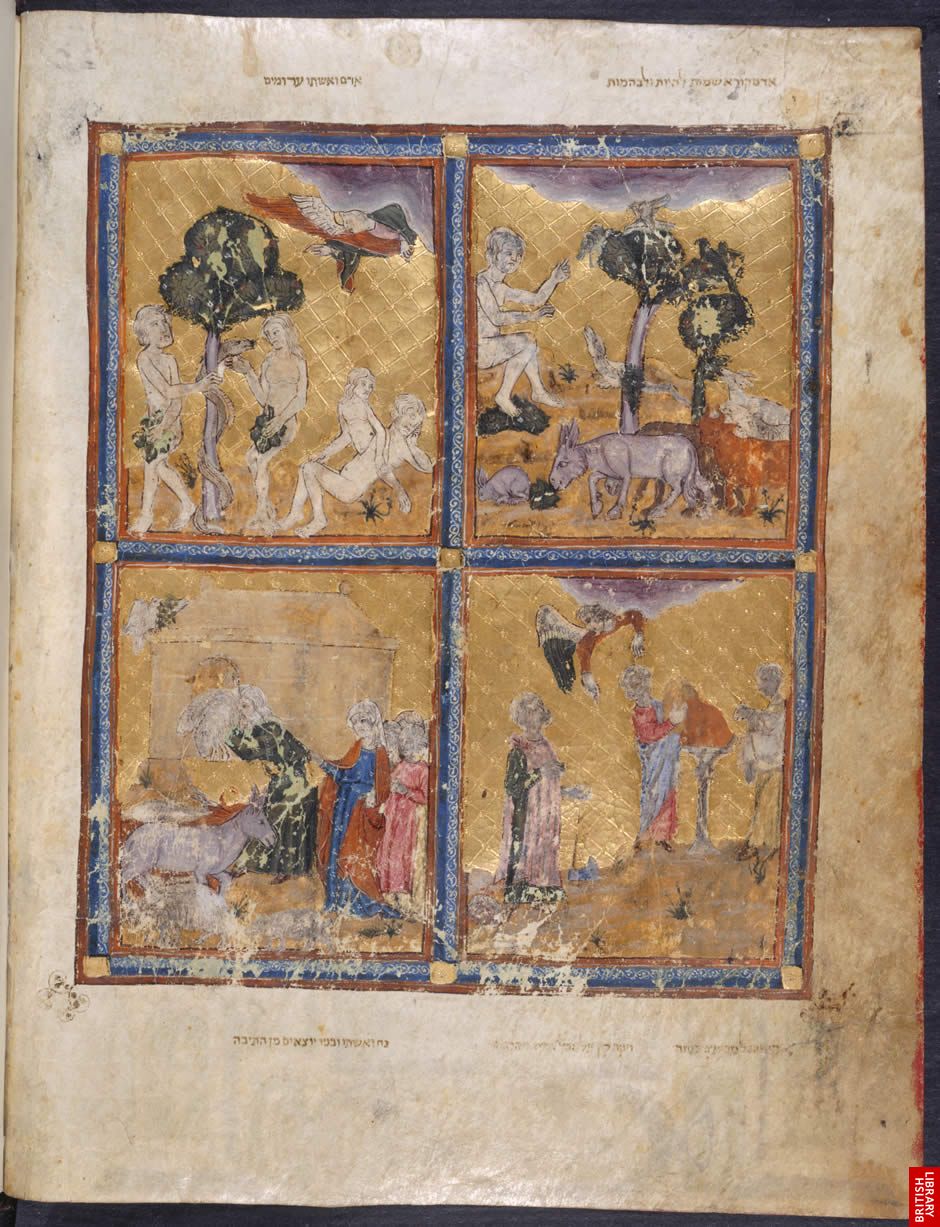Golden Haggadah, c. 1320
Golden Haggadah. Biblical scenes based on Genesis, 19-37. Northern Spain, probably Barcelona, c.1320
Anticlockwise from top right- Adam naming the animals, the Creation of Adam and Eve, the Temptation, Cain and Abel offering a sacrifice, Cain slaying Abel, and lastly Noah, his wife and sons coming out of the ark. God’s image is forbidden in Jewish religious contexts, and is totally absent in all the miniatures here. Instead, angels are seen intervening at critical moments.
The illumination of the manuscript – its paintings and decoration – was carried out by two artists. Though their names are unknown, the similarity of their styles implies they both worked in the same studio in the Barcelona region. The gothic style of northern French painting was a strong influence on Spanish illuminators, and these two were no exceptions.
There is also Italian influence to be seen in the rendering of the background architecture. Differences between the two artists may be attributed to their individual talents and training. The painter of the scenes shown here tends towards stocky figures with rather exaggerated facial expressions. The second artist has a greater sense of refinement and achieves a better sense of space.
Islamic rule in Spain came to an end in 1492, when King Ferdinand and Queen Isabella (the Catholic Monarchs) defeated the Muslim army at Granada and restored the whole of Spain to Christianity. Months later the entire Jewish population was expelled. The manuscript found its way to Italy and passed through various hands, serving as a wedding present at one stage. In 1865, the British Library (then the British Museum Library) bought it as part of the collection of Hebrew poet and bibliophile Giuseppe (or Joseph) Almanzi.




